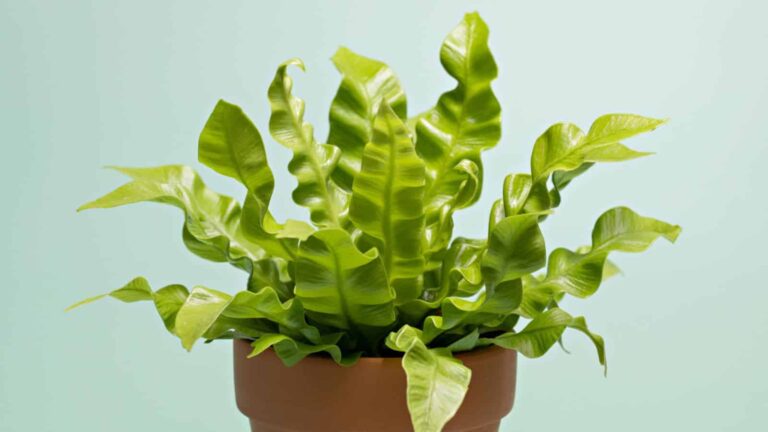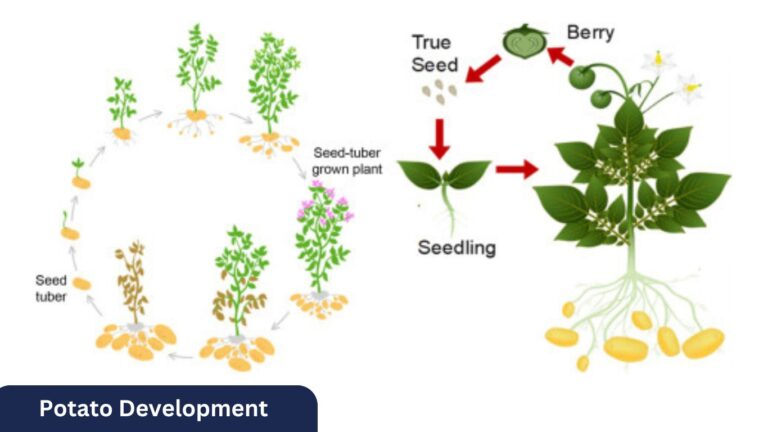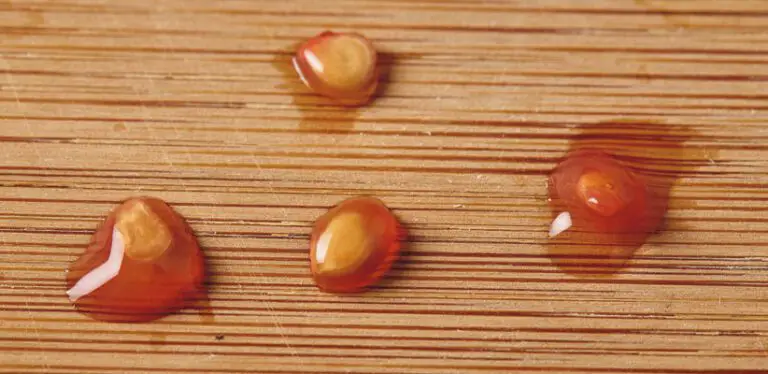Creeping Juniper: The Best Guide to Growing Living Carpet
Table of Contents
Growing Conditions for Creeping Juniper
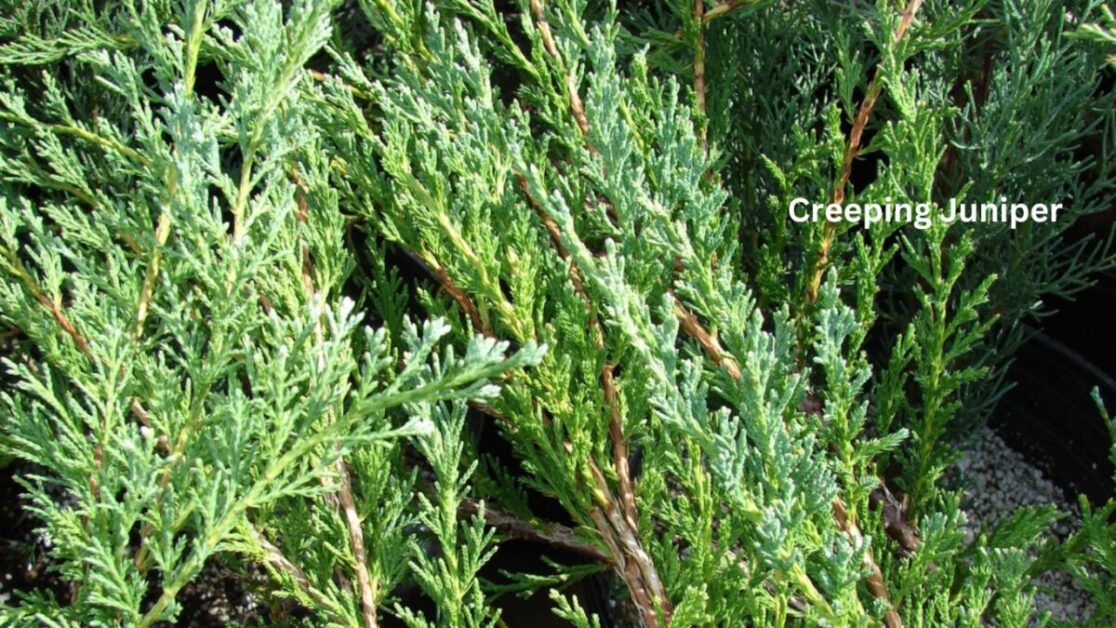
Creeping juniper, scientifically known as Juniperus horizontalis, is a versatile and resilient evergreen shrub that thrives in a variety of growing conditions. With its low-growing habit and attractive foliage, it is a popular choice for ground cover, borders, and rock gardens. To ensure successful growth and vitality of creeping juniper, it is important to understand its specific requirements.
First and foremost, creeping thrives in full sun. It requires at least six hours of direct sunlight each day to reach its full potential. Planting it in an area that receives ample sunlight will enhance its growth rate, maintain its dense foliage, and promote vibrant colors. As a low-maintenance plant, creeping juniper can tolerate a range of soil types, including sandy, loamy, and rocky soils. However, it prefers well-draining soil that is not prone to waterlogging. Providing a fertile soil enriched with organic matter will further support its growth and overall health. Avoid heavy clay soils that can cause root rot and stunted growth.
Additionally, creeping is highly adaptable to a wide range of climates. It is typically hardy in USDA hardiness zones 3 to 9, making it suitable for various regions across the United States. However, it is important to consider regional variations in temperature, humidity, and rainfall when selecting a variety of creeping . Different varieties may have specific requirements in terms of cold tolerance, heat resistance, and drought tolerance. It is recommended to consult local gardening experts or reference reputable sources to choose the right variety that will thrive in your specific climate.
In the next section, we will delve deeper into the selection process and explore the factors to consider when choosing the right variety of creeping juniper. By understanding your specific growing conditions and preferences, you will be able to select a variety that perfectly suits your garden and landscaping needs.
Selecting the Right Variety of Juniper
Selecting the right variety of creeping juniper is an important step in creating a visually appealing and well-functioning garden or landscape. With a wide range of options available, it’s essential to consider certain factors to ensure the success of your project.
Firstly, consider the climate and growing conditions in your area. Creeping are hardy plants that can tolerate a range of temperatures, but different varieties have specific preferences. For example, the Juniperus horizontalis ‘Wiltonii,’ also known as Blue Rug juniper, thrives in colder climates and is ideal for ground covers and erosion control in northern regions. On the other hand, the Juniperus horizontalis ‘Bar Harbor’ can withstand more extreme heat and is suitable for drier, warmer climates.
Secondly, take into account the purpose and design of your garden or landscape. Are you looking for a low-maintenance ground cover or a cascading plant for rock gardens? Some creeping varieties, like the Juniperus horizontalis ‘Andorra,’ have a dense, mounding habit that works well as a ground cover, while others, like the fast-growing Juniperus horizontalis ‘Blue Heaven,’ provide an attractive trailing element for walls or slopes.
By considering the climate and growing conditions in your area, as well as the specific requirements and desired characteristics of different varieties, you can select the right creeping variety to bring beauty and functionality to your outdoor space.
Preparing the Soil for Juniper
Preparing the soil is an essential step in successfully growing creeping juniper. This hardy evergreen plant requires specific soil conditions to thrive and provide a lush ground cover. To ensure optimal growth and health, it is crucial to prepare the soil before planting.
Firstly, it is important to note that creeping juniper prefers well-draining soil. This means that the soil should not hold excessive moisture, as this can lead to root rot and other problems. To achieve proper drainage, consider incorporating organic matter such as compost or well-rotted manure into the soil. This will improve its structure and help maintain a healthy balance of air and water.
Additionally, creeping juniper thrives in soil that is slightly acidic to neutral. Conducting a soil test will provide insight into the pH level of your soil. If the pH is too high or too low, you can make appropriate adjustments by adding amendments. For example, adding elemental sulfur can lower the pH for soils that are too alkaline, while lime can raise the pH for soils that are too acidic.
By taking the time to properly prepare the soil, you set the foundation for successful growth and development of your creeping juniper. In the next section, we will delve into the steps involved in planting this versatile ground cover in the ground.
Planting Juniper in the Ground
When it comes to planting creeping juniper in the ground, it is important to consider the ideal growing conditions for this versatile plant. The first factor to consider is the sunlight requirement. Creeping juniper thrives in full sun but can also tolerate partial shade. Therefore, it is advisable to select a location that receives at least six hours of direct sunlight each day.
Another crucial aspect to consider is the soil type and drainage. Creeping juniper prefers well-drained soil that is slightly acidic to neutral in pH. The soil should have good drainage to prevent waterlogging, as excessive moisture can lead to root rot and other fungal diseases. It is recommended to amend the soil with organic matter such as compost or peat moss to improve its structure and fertility.
As for the planting process, begin by preparing the soil. Remove any weeds, rocks, or debris from the planting area. Dig a hole slightly larger and deeper than the root ball of the creeping juniper. Gently loosen the roots and place the plant in the hole, ensuring that the crown of the plant sits level with the soil surface. Backfill the hole with soil, firming it gently around the roots. Finally, water thoroughly to settle the soil and promote root establishment.
Now that you have successfully planted your creeping juniper, it is time to move on to the next step of caring for this wonderful plant. By providing the right conditions and maintenance, you can ensure its healthy growth and vibrant appearance in your garden.
Caring for Juniper in Containers
Cultivating creeping juniper in containers can be a rewarding experience that allows you to enjoy the beauty of this versatile plant on a smaller scale. However, it is important to provide the proper care and attention to ensure its optimal growth and health. Here are a few key considerations for caring for juniper in containers.
First and foremost, selecting the right container is crucial. Choose a container that is wide and deep enough to accommodate the plant’s root system, allowing for proper drainage. Opt for a container made of a durable material such as terracotta or plastic, as this will help maintain a stable environment for the plant.
Next, it is important to use a well-draining potting mix that is specifically formulated for container gardening. This will provide the necessary nutrients while allowing excess moisture to drain away, preventing root rot. Regularly check the moisture level of the soil, and water the plant only when the top inch of soil feels dry to the touch.
Container-grown juniper also benefits from a regular feeding schedule. Fertilize the plant with a balanced slow-release fertilizer formulated for evergreens, following the manufacturer’s instructions. This will provide the necessary nutrients for sustained growth and vibrant foliage.
Pruning is an important aspect of caring for juniper in containers. Regularly trim back any dead or damaged branches to promote healthy growth and maintain a compact shape. Be sure to use clean, sharp pruning tools to prevent the transmission of diseases.
By following these guidelines and providing the proper care, you can enjoy the beauty and versatility of juniper in containers. As with any plant, monitoring its health, providing appropriate conditions, and addressing any issues promptly will ensure long-term success. In the forthcoming sections, we will explore further aspects of caring for this remarkable plant both in containers and in the ground.
Watering Techniques for Creeping Juniper
When it comes to watering techniques for creeping juniper, it is important to strike the right balance between providing adequate moisture and avoiding overwatering. Creeping juniper plants are known for their adaptability and ability to withstand drought conditions, making them a popular choice for xeriscaping projects. However, they still require regular watering, especially during their establishment phase.
One effective method for watering juniper is the deep watering technique. This involves providing a thorough soak to the root zone rather than frequent shallow watering. Deep watering encourages the roots to grow deeper into the soil, promoting better drought tolerance and overall plant health. It is recommended to let the soil dry out slightly between waterings to prevent waterlogged conditions and the onset of root rot. Understanding the specific watering needs of the juniper variety you have chosen is crucial for maintaining optimal growth and longevity.
Fertilizing Juniper for Optimal Growth

Fertilizing is an essential aspect of promoting optimal growth in creeping juniper. By providing the necessary nutrients, you can ensure that your plants thrive and maintain their vibrant appearance. When it comes to fertilizing juniper, there are a few key considerations to keep in mind.
First and foremost, it’s crucial to understand the specific nutrient requirements of your juniper variety. Different varieties may have varying needs, so it’s important to select a fertilizer that is formulated to meet those specific requirements. Typically, a balanced, slow-release granular fertilizer can be used for creeping juniper, providing a steady supply of nutrients over time.
When applying fertilizer, it’s best to follow the manufacturer’s instructions carefully. Though juniper generally prefers a slightly acidic soil pH, it’s important not to over-fertilize, as excessive nutrients can lead to poor growth and even damage the plant. Apply the fertilizer evenly around the base of the plant, being mindful not to let it come into direct contact with the foliage, as this may cause harm.
Regular fertilization, typically once or twice a year, depending on the specific needs of your juniper variety, can help maintain its health and encourage robust growth. By providing the necessary nutrients in the right amounts, you can ensure a flourishing and picturesque juniper in your garden or landscape.
Pruning and Shaping Creeping Juniper
Proper pruning and shaping techniques are essential for maintaining the health and aesthetic appeal of creeping juniper plants. Regular pruning helps to promote bushier growth, control the plant’s size, and enhance its overall shape. When it comes to pruning creeping juniper, there are a few key guidelines to keep in mind.
Firstly, it is important to note that creeping junipers should be pruned during their dormant period, which typically occurs in late winter or early spring. This timing ensures minimal stress on the plant and allows for optimal growth during the growing season. When pruning, it is crucial to use clean, sharp pruning shears to make smooth and precise cuts. This helps to prevent injury to the plant and reduces the risk of disease transmission.
When shaping creeping juniper, it is best to start by removing any dead, damaged, or diseased branches. These should be cut back to the main stem or parent branch, using a technique called “heading back.” Additionally, to maintain a dense and compact appearance, selectively prune some of the longer branches by cutting them back to a lateral bud or branch junction. This encourages branching and creates a more uniform and balanced shape. Remember to step back occasionally to assess the overall form and make adjustments accordingly.
In the next section of the article, we will explore common pests and diseases that can affect juniper and discuss effective strategies for prevention and management.
Dealing with Common Pests and Diseases in Juniper
Common Pests and Diseases in Creeping Juniper can pose a significant challenge for gardeners, but with the right knowledge and proactive measures, these issues can be effectively managed. One common pest that affects creeping juniper is spider mites. These tiny arachnids feed on plant sap, usually causing yellowing or browning of the foliage. To prevent and control spider mites, regular monitoring is crucial. If detected early, a strong jet of water can help dislodge them from the plant. Additionally, introducing predatory insects like ladybugs or using insecticidal soap can provide effective control.
Another common issue that gardeners may encounter is the fungal disease known as juniper tip blight. This disease often leads to browning and death of the juniper’s tips, eventually causing significant damage to the plant. Pruning affected areas and destroying any infected plant debris can help control the spread of the disease. To prevent juniper tip blight, it is important to avoid overhead watering, as excess moisture promotes fungal growth. Applying a fungicide labeled for use on junipers can also provide protection against this disease. Proper sanitation and regular inspection are essential in maintaining the health and vigor of creeping juniper.
Managing Weeds around Creeping Juniper
Weeds can quickly take over and choke out the growth of your creeping juniper if not properly managed. Meticulous weed control is crucial to ensuring the health and vitality of your plants. Here are some effective strategies for managing weeds around creeping juniper.
First and foremost, it is important to establish a weed-free zone around your juniper. Start by manually removing any existing weeds, ensuring that you extract the entire root system to prevent regrowth. Regularly inspect the area for new weed growth and promptly remove any emerging weeds. This is especially crucial during the initial stages of growth when your juniper is still establishing itself.
To further suppress weed growth, consider implementing a layer of organic mulch around your juniper. A thick layer of mulch not only serves as a barrier to prevent weed seeds from germinating, but it also helps to retain moisture in the soil and regulate temperature. Organic mulches, such as wood chips or shredded bark, are recommended as they will gradually decompose and enrich the soil with organic matter.
Another effective method for weed control is the use of landscape fabric or weed barriers. These materials can be placed on the soil surface before planting your creeping juniper and cut openings to allow for proper planting. Landscape fabric or weed barriers effectively prevent weed seeds from reaching the soil, inhibiting their growth and reducing the need for frequent weeding.
By implementing these strategies and maintaining a diligent weed management routine, you can create a weed-free environment that promotes the healthy growth and longevity of your creeping juniper. Regular monitoring, swift weed removal, and the use of mulch or landscape fabric are essential for successfully managing weeds around your cherished plants. With proper care, your creeping juniper can thrive without the interference of unwanted weeds.
Mulching Techniques for Creeping Juniper
Mulching is a crucial technique for maintaining the health and vitality of creeping juniper plants. By providing a protective layer of organic material around the base of the plant, mulching helps in conserving moisture, suppressing weeds, regulating soil temperature, and improving overall soil quality. When it comes to selecting the right mulch for your creeping juniper, it is important to consider a few key factors.
Firstly, choose a mulch that is well-draining to prevent excess moisture around the plant’s roots. This is particularly important for creeping junipers, as they are susceptible to root rot in overly wet conditions. Organic materials such as wood chips, pine needles, or composted bark are excellent choices as they allow for proper airflow while retaining moisture. Secondly, opt for a mulch that is low in acidity, as creeping juniper prefers neutral to slightly alkaline soils.
A mulch with a pH level of around 6.0 to 7.0 will help maintain the optimal soil balance for your plants. Finally, consider the aesthetic aspect of mulching. Select a mulch that complements the natural beauty of creeping juniper and enhances the overall visual appeal of your garden or landscape.
Winter Protection for Creeping Juniper
Protecting creeping juniper during the winter months is essential for maintaining the health and longevity of this resilient plant. With proper winter protection, you can help prevent damage caused by frost, freezing temperatures, and drying winds. Here are some effective strategies for protecting your creeping juniper during the winter season.
One of the simplest and most effective methods of winter protection is mulching. Apply a layer of organic mulch, such as shredded bark or straw, around the base of the creeping juniper. Mulch helps insulate the soil, keeping the roots protected from extreme temperature fluctuations. It also helps retain moisture and prevents weed growth, which can compete with the juniper for nutrients.
In addition to mulching, you can also consider constructing a protective barrier around the creeping juniper. This can be done using burlap or woven fabric. Wrap the barrier loosely around the plant, ensuring that it reaches from the base to the top. The barrier acts as a shield against cold winds and provides an extra layer of insulation. Remember to remove the barrier in early spring to allow for proper air circulation and prevent moisture buildup, which can lead to fungal diseases.
By implementing these winter protection measures, you can safeguard your creeping juniper from the harsh winter conditions, allowing it to thrive and continue enhancing the beauty of your garden.
Propagating Creeping Juniper through Cuttings
Creeping juniper, known for its low-growing and cascading foliage, can be easily propagated through cuttings. This method is a cost-effective way to expand your collection of creeping junipers or to share this beautiful plant with friends and fellow gardening enthusiasts. To successfully propagate creeping juniper through cuttings, it is important to follow a few key steps.
Firstly, select healthy and vigorous branches from the parent plant for your cuttings. Ideally, choose branches that are young and flexible, as they have a higher chance of rooting successfully. Using a clean and sharp pair of garden shears, make a clean cut just below a leaf node on the selected branch. Leaf nodes are areas where leaves are attached to the stem. Aim for a cutting that is around 4 to 6 inches long.
Once you have obtained the cutting, remove the lower leaves, leaving only a few sets at the top. This helps reduce moisture loss and directs the plant’s energy towards root development rather than leaf maintenance. Dip the bottom end of the cutting in a rooting hormone powder to encourage root growth. Then, insert the cutting into a well-draining propagation medium such as a mix of sand and peat moss. Mist the medium with water to provide the necessary moisture.
After planting the cuttings, place them in a warm and bright environment without direct sunlight. A greenhouse or a well-lit windowsill can be suitable locations. It is important to keep the medium consistently moist but not overly wet, as excess moisture can lead to root rot. In a few weeks to a couple of months, the cuttings should start developing roots. You can gently tug on the cutting to check for resistance, indicating successful root formation.
Propagating creeping juniper through cuttings allows you to create new plants that maintain the same desirable characteristics as the parent plant. With patience and care, you can enjoy the beauty of these low-growing evergreens in multiple areas of your garden or share their unique charm with others.
Transplanting Creeping Juniper to a New Location
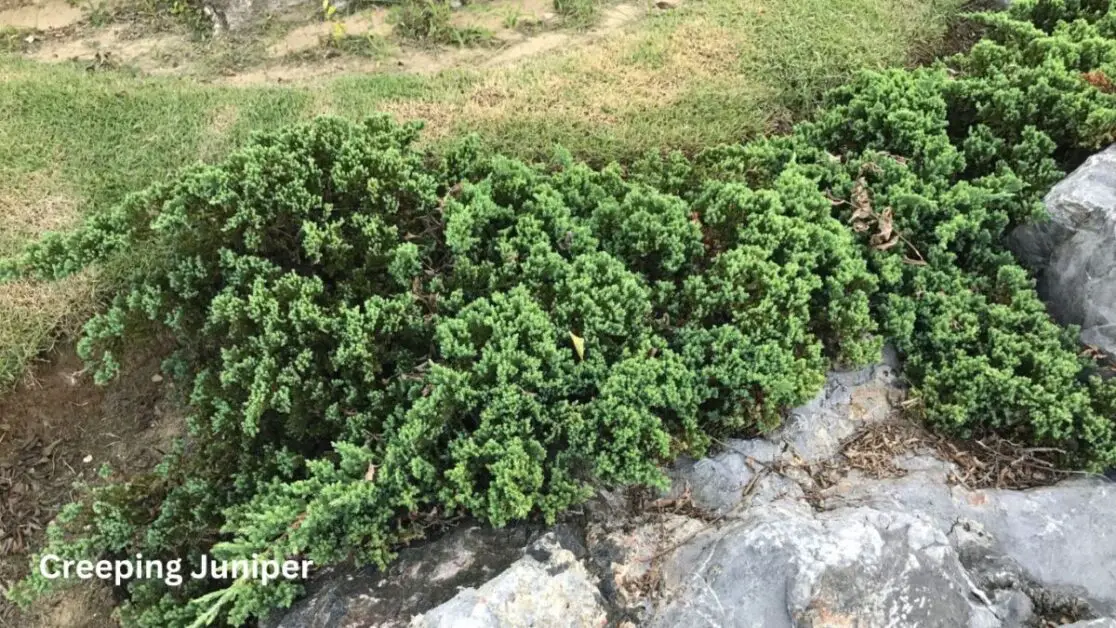
Transplanting creeping juniper to a new location requires careful preparation and execution to ensure the plant’s successful relocation and continued growth. Before beginning the transplanting process, it is essential to choose the right time of year, ideally during the early spring or late fall when the plant is in its dormant stage. This timing allows the creeping juniper to recover more effectively and adapt to its new surroundings.
To begin the transplant, carefully dig around the plant’s root ball, ensuring you take an ample amount of soil to minimize root disturbance. It is crucial to handle the roots gently to prevent any damage that might hamper the plant’s ability to establish itself in its new location. Once the root ball is free, carefully lift the creeping juniper and transport it to its new spot. Remember to prepare the new location beforehand by loosening the soil and removing any weeds or debris. Make sure to provide adequate spacing in its new home, considering the plant’s eventual size and growth.
Transplanting creeping juniper to a new location requires attention to detail and a gentle touch. By following these steps, you can ensure a smooth relocation for your creeping juniper, encouraging its continued growth and beauty in its new environment.
Below is a table providing some information about Creeping Juniper (Juniperus horizontalis), a low-growing evergreen shrub often used as ground cover in landscaping:
| Aspect | Description |
|---|---|
| Scientific Name | Juniperus horizontalis |
| Common Name | Creeping Juniper |
| Growth Habit | Low-growing, prostrate shrub with a spreading, mat-like form |
| Height | Typically grows 6 to 18 inches tall, but can spread up to 6 to 8 feet wide |
| Foliage | Needle-like, scale-like or both, depending on the cultivar; generally green to blue-green in color, sometimes turning bronze in winter |
| Sun Exposure | Full sun to partial shade |
| Soil Preference | Well-drained soil; tolerates a wide range of soil types, including poor, rocky, or sandy soils; prefers slightly acidic to neutral pH |
| Hardiness Zones | USDA Zones 3 to 9 |
| Watering Needs | Drought-tolerant once established; requires occasional watering during periods of extreme heat or drought |
| Maintenance | Low maintenance; pruning may be necessary to control spread or maintain desired shape; generally pest and disease resistant |
| Uses | Ground cover, erosion control on slopes, mass planting, in rock gardens or along borders, in containers |
| Special Features | Provides year-round interest with its evergreen foliage; produces blue-black berries (cones) that attract birds; tolerates coastal conditions and urban pollution |
This table provides a basic overview of Creeping Juniper, but keep in mind that specific characteristics may vary depending on the cultivar and growing conditions.
Creating a Design with Creeping Juniper
When it comes to designing a garden or landscape, incorporating creeping juniper can add both beauty and functionality to the overall aesthetic. Creeping juniper is a versatile plant that can be used in various design elements, such as groundcovers, erosion control, or even as a cascading element in rock gardens. Its low-growing and spreading nature, coupled with its attractive evergreen foliage, make it a popular choice for creating visually pleasing compositions.
One effective way to utilize creeping juniper in your design is by incorporating it as a groundcover. Its ability to spread and fill in gaps helps to create a seamless and cohesive look to the landscape. Whether used to blanket large expanses of ground or to fill in between stepping stones, creeping juniper provides a lush, green carpet effect that adds depth and interest to any outdoor space. Additionally, its tolerance for various soil conditions and its ability to withstand minimal water make it a low-maintenance option for those looking to add both beauty and functionality to their design.
Another way to incorporate creeping juniper into your garden design is by using it as a cascading element in rock gardens or along stone walls. Its ability to flow and drape over rocks or walls creates a soft and organic feel that complements the ruggedness of the surrounding materials. This naturalistic look adds a touch of tranquility and serenity to the space, making it an ideal choice for those seeking a peaceful outdoor retreat.
Overall, integrating creeping juniper into your garden design offers numerous opportunities for creating stunning and visually appealing compositions. Whether used as a groundcover or as a cascading element, its versatility and low-maintenance nature make it a valuable addition to any outdoor space. Stay tuned for our next section as we explore how to maintain the health and longevity of creeping juniper to ensure its long-lasting beauty in your design.
Maintaining the Health and Longevity of Creeping Juniper
Maintaining the health and longevity of creeping juniper requires regular care and attention. One important aspect of this is proper watering techniques. Creeping juniper prefers a moist but well-drained soil, so it is crucial to avoid overwatering. A good rule of thumb is to water deeply but infrequently, allowing the top few inches of soil to dry out before watering again. This helps promote strong root growth and prevents issues such as root rot. Additionally, watering in the morning or early afternoon allows the foliage to dry before evening, reducing the risk of disease.
In addition to watering, regular pruning and shaping are essential for the health and longevity of creeping juniper. Pruning helps maintain the desired shape and size, prevents the plant from becoming too dense, and promotes air circulation, which reduces the risk of diseases. It is best to prune creeping juniper in early spring before the new growth starts. Use clean, sharp pruning shears to make clean cuts, avoiding tearing or damaging the branches. Removing dead or diseased branches is also important to prevent the spread of pests and diseases. Taking the time to perform regular pruning will keep your creeping juniper looking its best and ensure its overall health for years to come.
How often should creeping juniper be watered?
Creeping juniper should be watered regularly, especially during dry periods. It is recommended to water deeply once a week rather than shallowly and frequently.
Can creeping juniper be grown in containers?
Yes, creeping juniper can be grown in containers. However, it is important to ensure that the container has proper drainage and that the plant receives adequate sunlight and water.
What is the best time to prune creeping juniper?
The best time to prune creeping juniper is in early spring or late winter before new growth starts. Avoid pruning during hot summer months as it can stress the plant.
How can common pests and diseases be prevented in creeping juniper?
To prevent common pests and diseases in creeping juniper, make sure to provide proper air circulation, avoid overwatering, and maintain good hygiene by removing fallen debris and diseased branches.
Should weeds be removed from around creeping juniper?
Yes, weeds should be removed from around creeping juniper as they can compete for nutrients and water. Mulching can help suppress weed growth around the plant.
How should creeping juniper be protected during winter?
To protect creeping juniper during winter, it is recommended to apply a layer of mulch around the plant to insulate the roots and protect them from extreme temperatures.
Can creeping juniper be propagated through cuttings?
Yes, creeping juniper can be propagated through cuttings. Take semi-hardwood cuttings in summer and root them in a well-draining rooting medium.
Is it possible to transplant creeping juniper to a new location?
Yes, creeping juniper can be transplanted to a new location. It is best done in early spring or early fall when the plant is not actively growing.
Can creeping juniper be used for creating designs in landscaping?
Yes, creeping juniper is often used for creating designs in landscaping due to its low-growing and spreading habit. It can be used as ground cover, in rock gardens, or to create borders.
How can the health and longevity of creeping juniper be maintained?
To maintain the health and longevity of creeping juniper, ensure it is grown in suitable conditions, provide proper care including watering, fertilizing, pruning, and protection from pests and diseases.


